Boiled peanuts are quite simply green peanuts simmered in a salty brine. They’re a little salty, a little earthy, and a whole lot delicious. This is a real southern delicacy!
I grew up in a small community in southwest Georgia. A very small community. The entire population of my home county is about 6,100, and the population of the county seat, the only town in the county, is about 2,000. That’s small. The next nearest town is 15 miles away, and it is only slightly larger than my hometown.
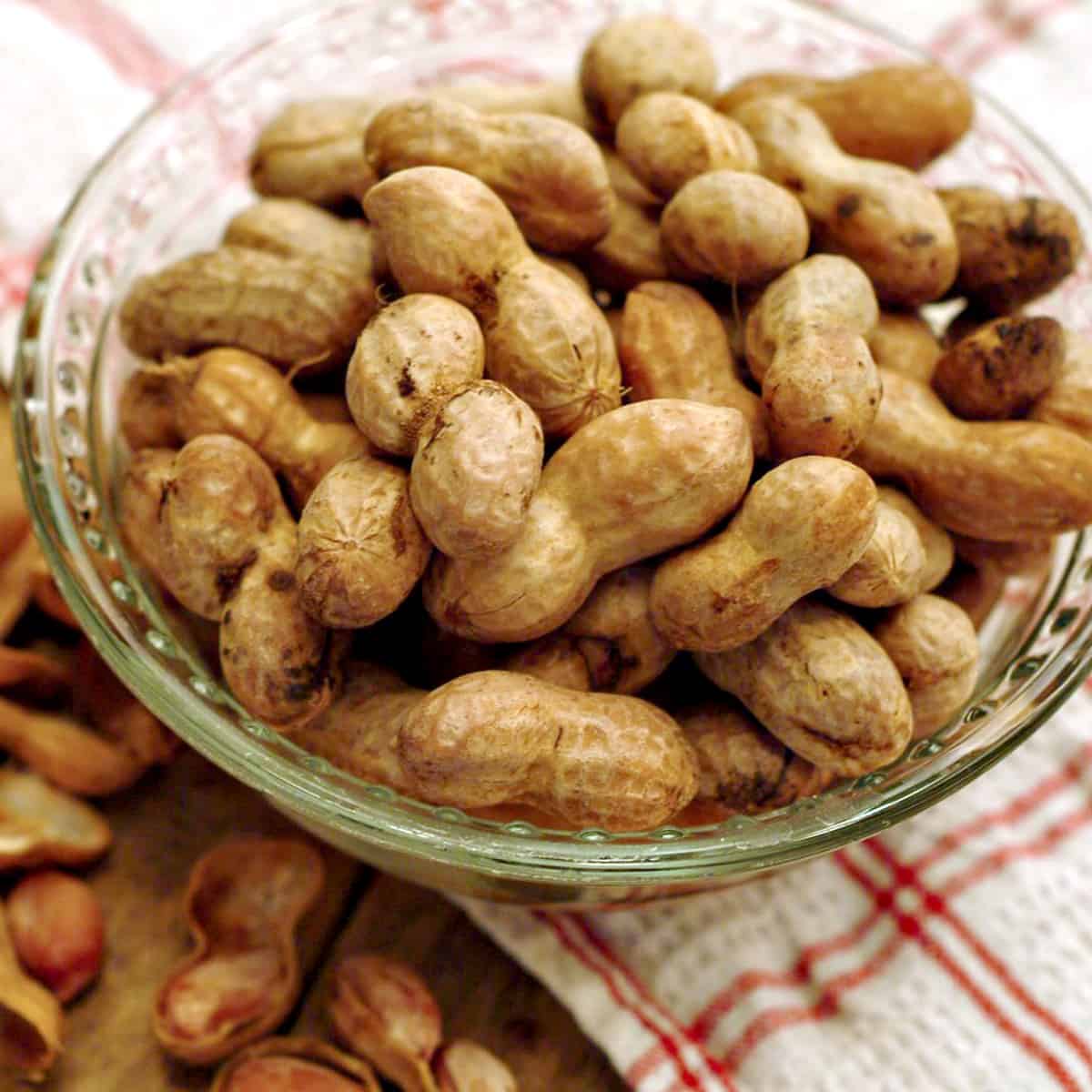
I am inextricably bound to that little town and the people there. It is as much a part of me as I am of it. No matter where I go, no matter where I live, that tiny little town will always be home.
Up until I was in the third grade, my family lived about ten miles out of town on our farm. Even after we moved to “town,” Daddy continued to farm for many more years. Daddy raised cows and pigs, and he grew mostly corn and peanuts. As a matter of fact, everyone I knew grew peanuts.
Back in those days, peanuts were a big money crop. If you had a good year with your peanuts, you did quite well. Even the people who didn’t farm were in some way dependent on peanuts. If the farmers did well, the merchants did well. If you didn’t farm and weren’t a merchant, you probably worked for one of the peanut processing plants. All intertwined and all hoping for a good peanut crop year after year.
Peanuts Aren’t Actually Nuts
Did you know that peanuts are not actually nuts? They’re legumes. In the same family as beans and lentils. And they grow underground.
Peanut harvesting begins in early to mid-September each year. When the peanuts are ready to harvest, the farmers use machines that dig the plants up and invert them on top of the ground. The peanuts are left to dry for a time on top of the ground before harvesting begins.
Large peanut combines are driven up and down the rows of inverted peanuts. The combine picks up the plants, separates the vines from the peanuts, drops the vines back down on the ground, and propels the peanuts up and into a large container on the back. Once the container, or “hopper,” is full, the peanuts are dumped into special trailers. The trailers are pulled two or three at a time out of the field and taken to the local processing plant.
The Peanut Lullaby of Childhood
I can remember the sound of the peanut dryers running day and night at the peanut processing plants during peanut season. You could hear them from anywhere in town. They were the lullaby we fell asleep to on fall nights.
And the smell! Right now, if I close my eyes, I can imagine the smell of freshly dug peanuts. It’s the freshest, earthiest smell you can imagine.
A little while ago, I was driving toward home, and suddenly I smelled that freshly dug peanut smell! Sure enough, I rounded the next curve in the road, and there was a field of peanuts being picked. I felt like a little girl coming home.
Boiled Peanuts – What a Delicacy!
Part of living in a peanut-growing area is the joy of eating Boiled Peanuts. They are truly a “southern thing,” and I understand that some people outside of the South don’t find them very appealing. That’s okay — more for me!
If you want to make boiled peanuts, you will need “green” peanuts. Green peanuts are peanuts that have recently been dug and haven’t dried out or been roasted.
I vividly remember Daddy bringing home stacks and stacks of fresh peanuts still on the vines every fall. Mama, my sisters, and I would pick the peanuts off the vines, then wash them well, and Mama would cook them for us to enjoy.
Where I live now, I don’t have access to really fresh green peanuts, but one of the local grocery stores occasionally has them in the produce department. When I saw them there on a recent trip, I just had to have some.
How to Make Boiled Peanuts
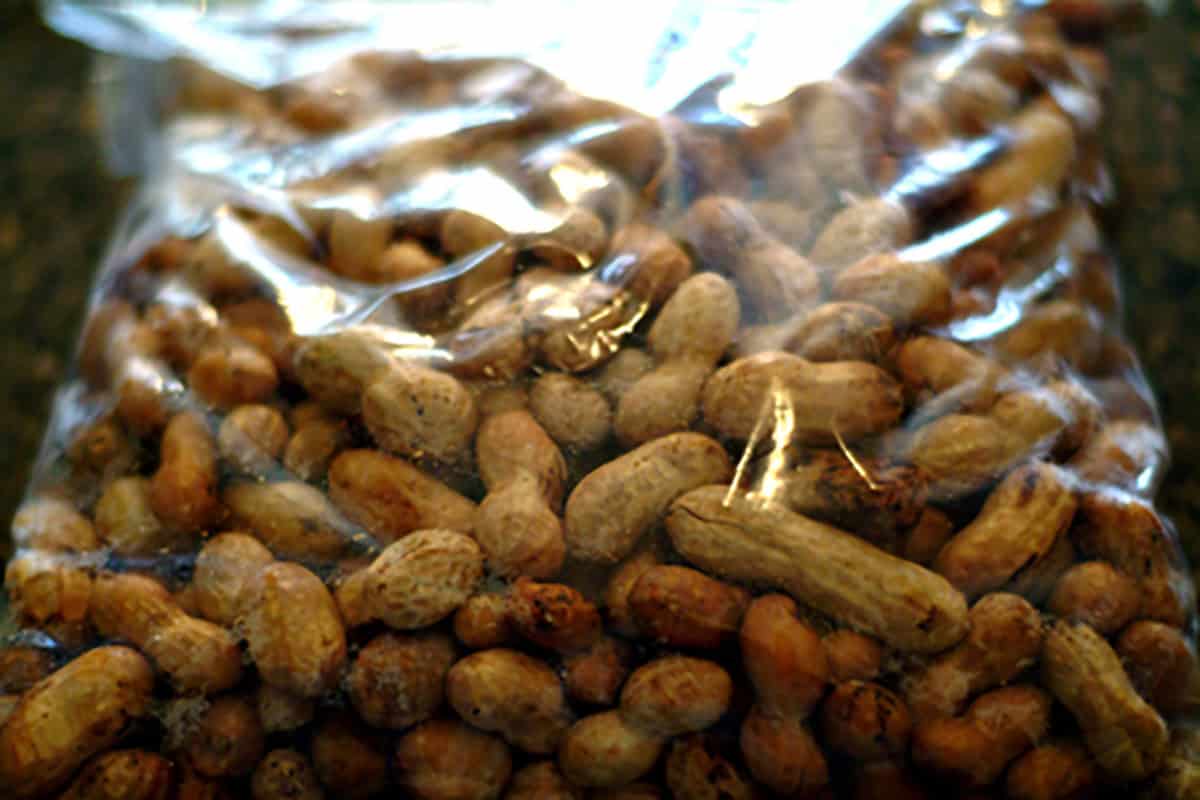
There are several varieties of peanuts, and I saw at least three different types in this one bag. The small ones with the red skins are Spanish peanuts. The rounded, plump ones – like ballpark peanuts – are Virginia peanuts, and the long ones with 3 or more peanuts in a shell are Valencias or Runners.
I’m sure this is far more than anyone ever wanted to know about peanuts and peanut production! But, hey, now you know something that maybe you didn’t before, right?
Let’s get these peanuts boiling!
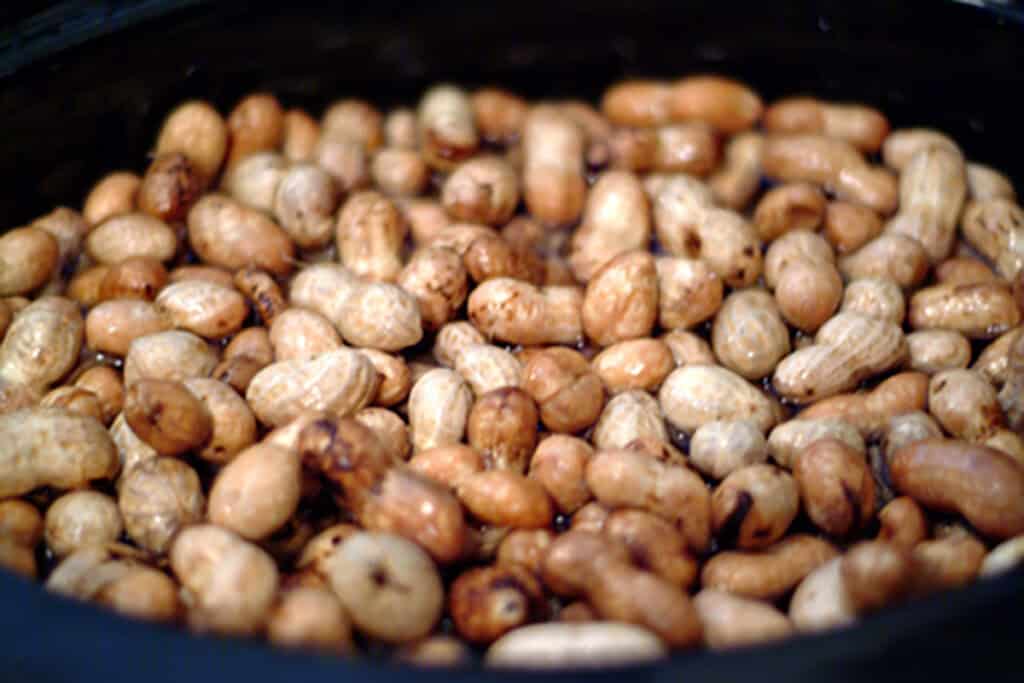
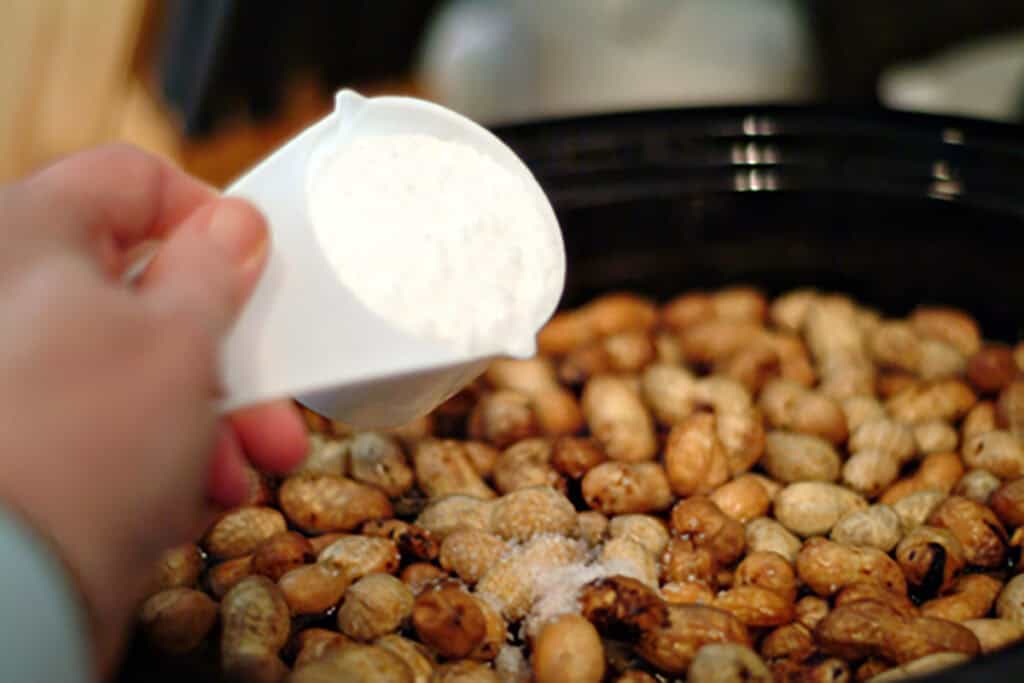
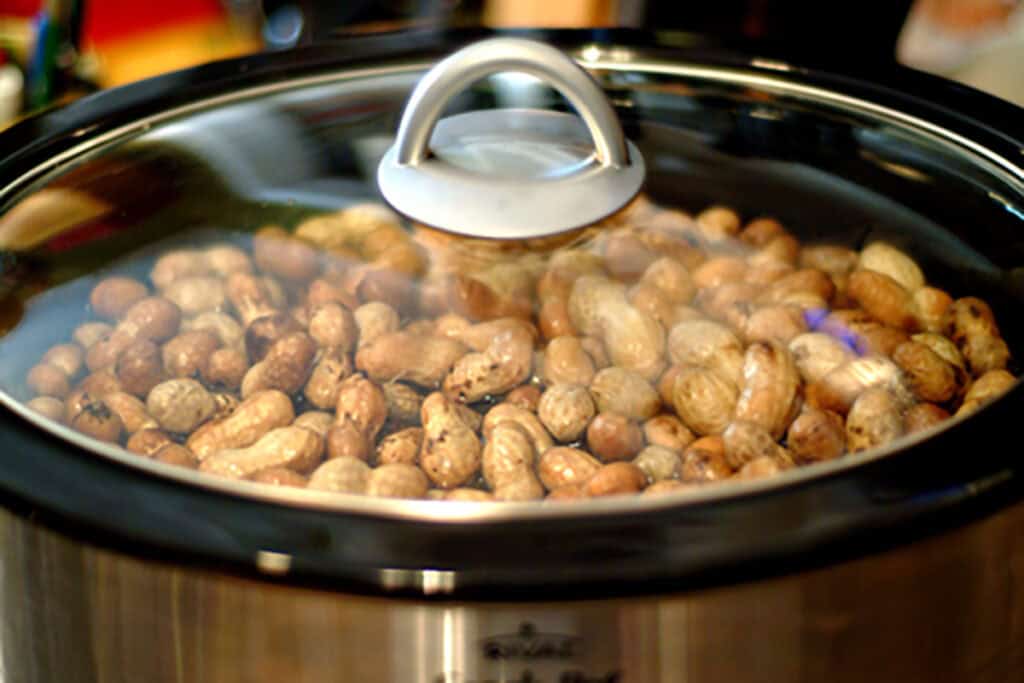
Wash the peanuts well to make sure all the dirt is dislodged. I usually fill the sink, dump the peanuts in, and agitate them.
Place the peanuts in a very large pot and add water to cover the peanuts by 1 inch or more. I typically use my crockpot so that I can just leave them alone to cook while I do other things in the kitchen.
Add the salt and stir well. Yes, it really does take a lot of salt to flavor the peanuts. However, a huge amount of the salt gets discarded with the cooking brine.
Bring it to a boil (or set the slow cooker on high), then reduce the heat to a simmer, cover, and cook until done. Start testing for doneness after about 4 hours. The peanuts should have a soft, but not mushy, texture. Cook longer if needed. Sometimes it takes six or more hours for the peanuts to cook.
After the peanuts are done, drain the brine and store the peanuts in the refrigerator (if there are any left!). Don’t let them sit in the brine. They’ll get too salty.
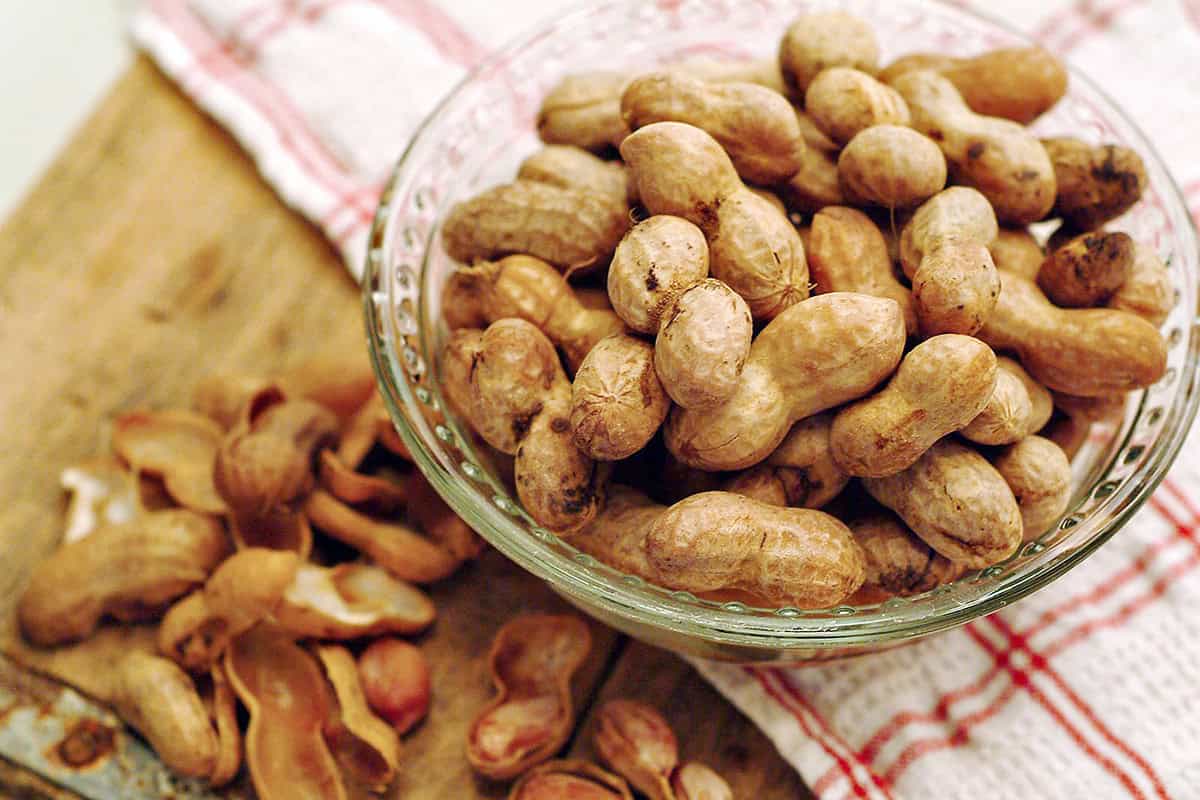
More Recipes You’ll Like
- Puff Pastry Cheese Straws
- Sweet and Spicy Peanuts
- Baked Fontina with Herbs
- Garlic Butter and Herb Popcorn
- Spicy Cheese Crackers
Check out more classic southern comfort food recipes!

Have a question or thought to share?
If you have a question about the recipe or if you’ve made it and want to share how it turned out, I would truly enjoy hearing from you. Just scroll down to leave a comment or add your star rating.
Thank you for stopping by. It means a lot to have you here.
Recipe
Want to save this recipe?
Enter your email below and get it sent straight to your inbox.
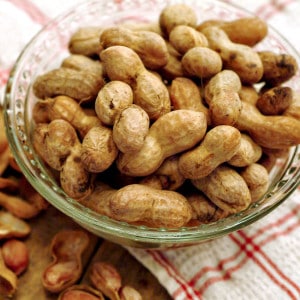
Boiled Peanuts
Ingredients
- 1 gallon cleaned green peanuts
- ½ cup salt don't worry – most of it gets discarded
- Water
Instructions
- Wash the peanuts well to make sure all the dirt is dislodged. I usually fill the sink, dump the peanuts in and agitate them.1 gallon cleaned green peanuts
- Place the peanuts in a very large pot and add water to cover the peanuts by 1 inch or more.
- Add salt and stir well. Remember that a huge amount of the salt gets discarded with the cooking brine.½ cup salt
- Bring it all to a boil, then reduce the heat to a simmer, cover and cook until done. Start testing for doneness after about 4 hours. The peanuts should have a soft, but not mushy, texture. Cook longer if needed. Sometimes it takes 6 or more hours for the peanuts to cook.
- After the peanuts are done, drain the brine and store the peanuts in the refrigerator. Don’t let them sit in the brine as they'll become too salty.
Notes
Nutrition Information
Nutrition information is calculated by software based on the ingredients in each recipe. It is an estimate only and is provided for informational purposes. You should consult your healthcare provider or a registered dietitian if precise nutrition calculations are needed for health reasons.

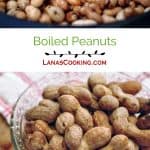

Being a loving resident of the Deep South for over 50 yrs., I can attest that your recipe is perfect! Admittedly, they are sometimes an acquired taste, but then WATCH OUT!
My family waits for fresh raw peanuts patiently every year! Some even obtained by local farmers. Local Farmers markets are best! Varieties of peanuts grown varies and we can get spoiled by favorites. Many years ago, when my dear mother-in-law first came to our country home (having been born and living in much larger cities) said: “So, where are all the peanut trees?”. She learned to love and learn about them too! Thanks for your many wonderful recipes that we adore!
Thanks so much, Brenda!
Lana, I bet you have eaten your share of peanuts cooked in an iron wash pot or syrup kettle that turn purple . Always use non-iodized salt for boiling peanuts in cast iron otherwise, they will be purple peanuts lol.
Hmm. Can’t say that I’ve ever seen that. We never did our peanut boiling in either of those kinds of pots.
I loved reading your story and learning how to make boiled peanuts.
Since I don’t have green peanuts and it’s the wrong time of year to get them I think I will travel to the south in the fall and get some.
Thanks for the information.